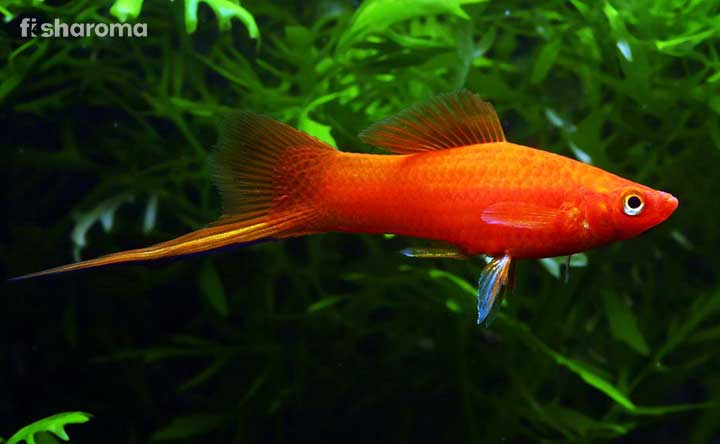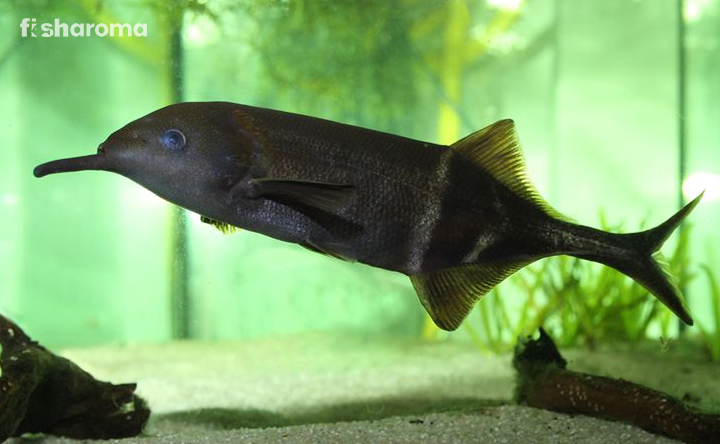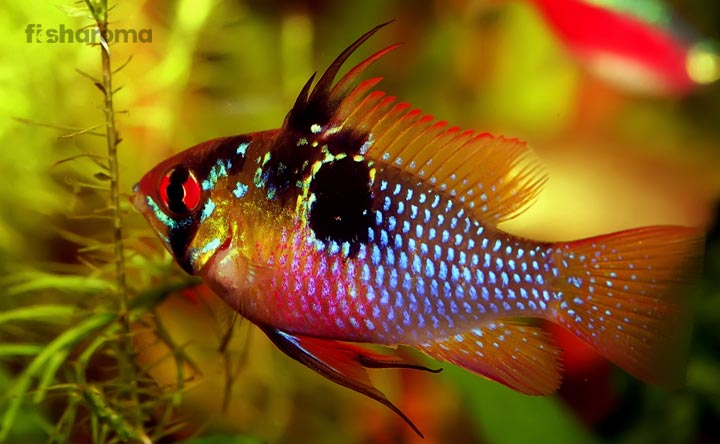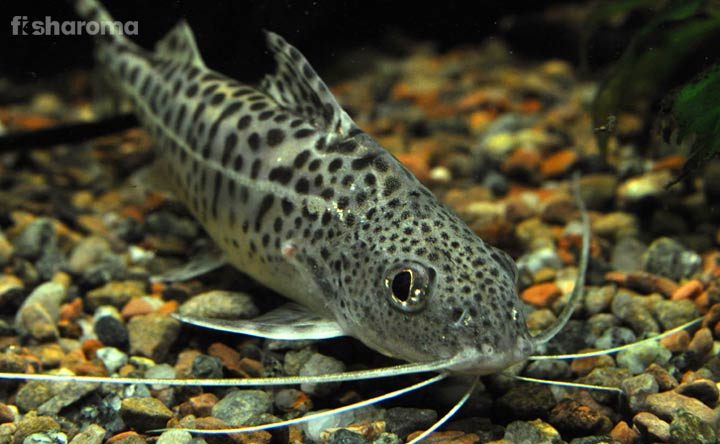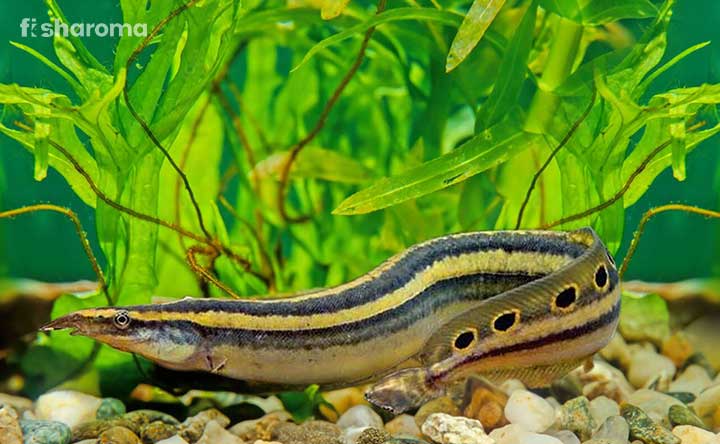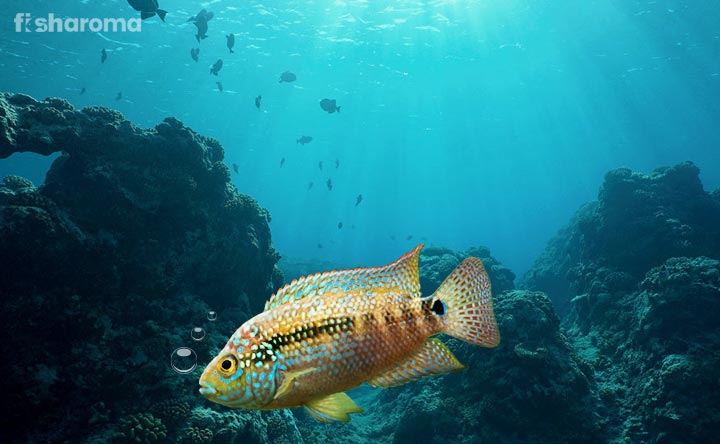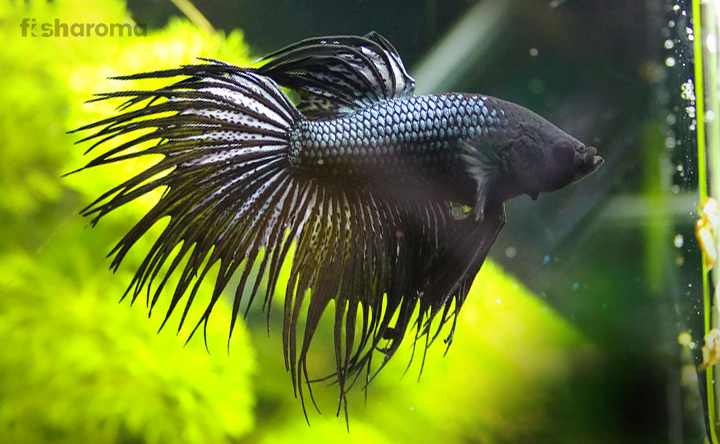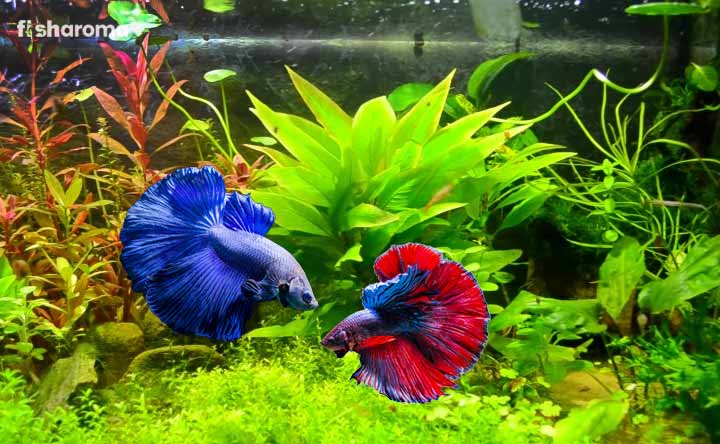Clown Loach – The Complete Care Guide for This Mischievous Pet
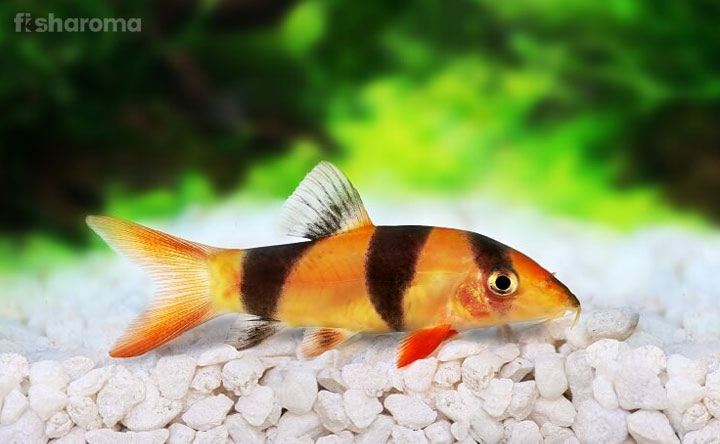
Known for their striking appearance and mischievous behavior, Clown Loaches have a distinct charm to them that is unparalleled, to say the least. It’s no wonder why they are highly in demand across the globe. But no matter how fun they are to look at, caring for them is a whole other ballgame, for which you have to bring your knowledge to the table. This is where we come to your aid. So, let us get to know these freshwater beauties up and close.
Key Specifications of Clown Loach
Before getting into the intricate details, brush yourself up with the key specifications of this fish.
| Scientific Name | Chromobotia macracanthus |
| Family | Botiidae |
| Origin | Southeast Asia |
| Size | 12” (30 cm) |
| Color | Orange with Black Stripes |
| Care Level | Intermediate |
| Lifespan | 20 Years |
| Temperament | Peaceful |
| Compatibility | High |
| Tank Size | 150+ Gallons |
| Diet | Omnivore |
Overview
A sole member of the Chromobotia genus, Clown Loach belongs to the Botiidae family. It has derived its name due to its display of strange activities that range from swimming upside down to playing dead.
Described for the first time in 1852 by Dutch ichthyologist, herpetologist, and medical doctor Pieter Bleeker as Cobitis macracanthus, its scientific name was changed to Chromobotia macracanthus in 1989. The term ‘macracanthus’ translates to ‘big spine’ referring to their pre-orbital spine. It is also known as Tiger Loach.
They are a bottom-dwelling fish that spend most of their time near the substrate or the middle portion of the tank.
The unique morphological features of a Clown Loach makes it the only species in its genus.
Origin & Habitat of Clown Loach
Native to Southeast Asia, Clown Loaches are seen in Indonesia, Borneo, Malaysia, and Sumatra. Although they mainly inhabit small streams and river tributaries, they move to the large rivers during floods. In addition, they migrate upstream to the rainforest that has soft water during spawning.
They prefer slow-moving stream that is populated with a fair amount of vegetation. In the wild, they are very adaptable by nature, being able to live in both standing and running water. The same applies to the type of water they live in since they are seen both in murky and clear water.
Appearance of Clown Loach
Sporting a long and laterally compressed body, Clown Loach is a treat for an aquarist’s eyes. Their deeply forked caudal fin helps them propel through water majestically.
They have an angled down mouth with thick lips. The two pair of whisker-like barbels located on their snout helps them in sifting through the substrate in search of food. They also have pre-orbital spines beneath each eye which they use for defending themselves from predators. They are also known to prick on the fingers of aquarists. So, beware while feeding them!
The lateral line system present in them helps them sense any minute change in water pressure, thereby alerting them of predators. Their body is covered with a mucous layer instead of scales that act as a layer of protection. Their eyes, however, don’t have any protective cover.
Female Clown Loaches are plumper than males. In addition, the tips of the tail are straight in females and curved inwards in males.
Size of Clown Loach
In the wild, a Clown Loach can grow up to 16” (40 cm) in length, but in captivity, they usually don’t grow more than 12” (30 cm).
Color of Clown Loach
The colors and patterns of Clown Loaches are among their most striking features and are the prime reasons as to why they are so hugely popular.
Resembling a tiger in appearance, they are of orange color with three prominent jet black vertical bars across their body – one across their head and eyes almost like a mask, one starting from their dorsal fin and extending to the base of their tail, and the other in between these two. The tail and fins are red in color.
A rare platinum/albino variant also exits, wherein the black bars are replaced by the white ones, although the color morph is still orange.
There are two genetically separate populations of Clown Loaches – one from Borneo, the other from Sumatra. While the Borneo Clown Loaches have black pigmentation in their fins, the Sumatran ones have reddish-orange pigmentation in the fins.
Although dorsoventral bars are a sign of aggression, Clown Loaches are non-aggressive despite possessing them.
Behavior of Clown Loach
Extremely social by nature, they spend a majority of their time foraging the substrate. Although they are peaceful, mischief is also one of their prime attributes. When kept together, they can be seen as being playful and chasing one another, creating a visual spectacle in your tank.
They also are known for displaying bizzare behavior such as playing dead while lying at the bottom of the tank.
Part of a women-driven hierarchy, they usually are led by an alpha female whose movements and behavior influence the younger ones.
Lifespan of Clown Loach
Clown Loaches can live up to 20 years in the wild, but in captivity, they generally live up to 10 years. Providing the right living conditions helps in extending their lifespan in captivity.
Diet of Clown Loach
Omnivorous by nature, Clown Loaches feed on both plant matters and flesh. Practically speaking, they feed on anything and everything that comes their way – from crustaceans to worms, algae to plant leaves.
Snails are one of their most favored food items and they will gobble them up in no time. When it comes to the type of food, they are pretty easy to deal with since they consume both live and frozen food along with pellets and flakes.
An ideal diet of a Clown Loach should consist of the following:
- Bloodworms (Live and frozen)
- Brine Shrimp (Live and frozen)
- Earthworms
- Tubifex
- Mosquito Larvae
- Daphnia
- Algae Wafer
- Small Snails such as the Malaysian Trumpet Snails
- Blanched Cucumber
- Spinach
- Lettuce
- Peeled Squash
If you are looking for artificial food, then go for the following:
- Fluval Bug Bites
- API Fish Food Pellets
- Hikari Sinking Wafers
Frozen food must be thawed beforehand and dried food should be moistened by immersing them in water before putting them in the tank. Feeding twice a day in small yet quantitative amount should suffice for them. Make sure to pick up any wastes left behind in order to avoid contamination.
Since these fish love snails so much, you can start breeding snails in a separate tank so that you don’t have to go to the pet store every time you run out of your stock of snails.
Tank Requirements for Clown Loach
You need to provide the right living conditions for these freshwater creatures to thrive. To do that, you need to bear the following things in mind.
Tank Size
Clown Loaches are schooling fish and must be kept in groups of at least five with 30 gallons of space allotted to each of them. This means that if you are keeping five of them together, then a 150-gallon tank is what you need.
Tank Lid
Having a tight hood is essential since they are skilled jumpers. To ensure they are able to jump without injuring themselves, keep an air gap of around 10” (25 cm) between the water surface and the tank lid.
Substrate
Since they love foraging through the substrate, go for soft and sandy substrate along with small pebbles.
Filter
Clown Loaches generally appreciate moderate to strong current in the water, although they are also equipped to live in standing water. Thus, go for a strong filter. A large hang-on-back filter or a powerhead will get the job done here. It will also help keep the water oxygenated and aerated. Adding an airstone is also a great option in their tanks.
Nature of Lighting
Since they are most active in dark than in light, the recommended form of lighting for a Clown Loach tank is a subdued one. Adding too many supplementary lights would cause stress among them.
Presence of Flora
Their natural habitat is populated with aquatic plants which not only provides the much-needed shade and shelter to them but also acts as a filtration system. Both floating and submerged plants are ideal for them in a tank.
Aquatic plants that can be kept in the same tank with them are as follows:
- Amazon Sword Plant
- Hornwort
- Java Moss
- Water Spangles
- Crystalwort
Remember, they are prone to nipping. So, hardy plants should be preferred here which they can’t easily hip.
Ornaments
Keep boulders, driftwood, and rocks in the tank that will serve as hiding spots for these fish which are timid by nature, especially in their juvenile stage.
If you are keeping aquatic caves, then please ensure that their openings are large enough so that your Loaches don’t get stuck in them.
Cleaning Method
Maintain a scheduled cleaning slot of your tank. Ideally, cleaning the tank every three weeks keeps the ecological balance thriving inside the tank. Too frequent cleaning may kill off the beneficial bacteria inside the tank.
To clean the tank, empty the water and the pets in a bucket. Clean the substrate and ornaments under running water. Wipe the interiors of the glass walls with lukewarm water and scrape off any algae residue. Try and avoid using soap or chemical-based products as much as you can during this process.
Water Type for Clown Loach
The parameters of the water of the tank that hosts a Clown Loach should be the following.
Temperature
The temperature of the water should be 75-85° F (24-29° C). Regularly keep a tab on the temperature with the help of a submerged thermometer in your tank.
pH Level
Recommended pH level is 7-8, which is mostly neutral with a dash of alkaline. Use pH stripes to maintain this optimal level.
Hardness
They thrive in soft to medium water. Thus, the general hardness of the tank water should be 5-12 dGH.
Replacement Procedure
Regular replacement of the tank water ensures the well-being of your pet. The golden rule of water replacement is that never to replace the entire water altogether since doing that would bring upon a sudden change in the ecology inside the tank; something which your fish may not be able to adapt to easily.
Pick any of the three following water replacement regimes.
- You can replace 10% of the tank water every week, or;
- 20% of the tank water can be changed every 15 days, or;
- 40% of the tank water must be replaced on a monthly basis.
Whenever you add a new batch of water to the tank, make sure that its temperature, hardness and pH level is similar to the existing batch of water.
Compatibility of Clown Loach
As discussed above, Clown Loaches are social beings. Therefore, we can’t stress enough about how important it is to keep them together. In addition, they are shoaling fish as well. They make for a great addition in a community tank as long as they have suitable tankmates.
They must be kept in groups of at least five. When kept alone, they will always hide and suffer from a high level of stress. Of course, they should each have adequate space for themselves within the tank.
Suitable Tankmates for Clown Loach
Clown Loaches are compatible with a number of other species. Most peaceful freshwater species tend to do well with them. The following species make up for great tankmates for a Clown Loach.
- Asian Arowana
- Barred Rainbowfish
- Spotted Eel-Loach
- Boeseman’s Rainbow
- Dwarf Neon Rainbow
- Three Spotted Gourami
- Penguin Tetra
- Tiger Barb
- Ropefish
- Kuhli Loach
- Zebra Danio
- Borneo Sucking Loach
- Bristlenose Pleco
- African Cichlid
- Swordtail
- Bolivian Ram
- Angelfish
- Leopard Pigeon Discus
- Cherry Barb
- Neon Tetra
- Tiger Barb
- Black Widow Tetra
- Blue Lobster
- Red-Clawed Crab
Unsuitable Tankmates for Clown Loach
Avoid keeping them with slow-moving fish since they may chase them hastily inside the tank. Owing to their nipping habits, long-finned or tailed fish should also be avoided as well. In addition, do not keep them with aggressive or predatory fish.
Breeding of Clown Loach
Clown Loaches are extremely difficult to breed in captivity. Hence, most aquarists refrain from even attempting it. But still, if you are looking for it to breed, then you have to start by keeping a sexually mature pair in a separate tank for a couple of weeks. Feed them highly nutritious food at this stage.
You will eventually notice the female getting plumped up which indicates the production of roe. At this point, you need to place them in a tank that has a lot of plants and has optimal water conditions.
The ideal water temperature for breeding and hatching of the eggs should be 77-79° F (25-26° C) while the pH level should be 6.2-6.4.
After the females release the eggs, the males will fertilize them. At this stage, you need to remove both the parents from the tank else they will consume the eggs themselves. The fertile eggs can be easily identified by their pink color. They will also wriggle and move. The infertile ones will be brown in color.
After the eggs hatch in a few days, feed the fries live cultivated Infusoria. As they continue to grow, switch their diet to Brine Shrimp, Tubifex, and flake food after two weeks. Make sure the foods that you feed them are in small pieces. You don’t want them to choke on them.
After a few weeks, you can transfer them safely to the main tank. Keep a close watch though; if you notice them in danger from their parents or other fish, remove them.
The truth of the matter is that since Clown Loaches have a long lifespan, it is difficult to ascertain exactly when they want to mate. Thus, it’s better to not force them to breed.
Mature Clown Loaches are 6” (15 cm) long.
Clown Loach Diseases
Clown Loaches are highly susceptible to diseases than most other aquarium pets. This is primarily due to the fact that they don’t have body scales.
Ich is the most common disease that these bottom-dwelling fish suffer from. Also known as White-Spot disease, it is marked by white spots on their bodies and fins. In order to treat this parasitic disease, temporarily increase the temperature of the water to 86° F (30° C).
Another major disease that they get hit by is the Skinny Disease. In this case, as the name suggests, your Clown Loach lose weight dramatically even after being fed fair amount of food. Caused by internal parasites, you need to consult a veterinarian if your fish contract this disease.
We all know that precaution is better than cure. Thus, taking steps beforehand to control these diseases is a wise decision. An efficient way to ensure this is by quarantining. This includes quarantining any new fish that you buy from the market along with quarantining the substrate and ornaments.
Not to mention, regular cleaning of the tank and replacement of the tank water will help ensure that they remain healthy.
Interesting Facts about Clown Loach
- The color of a Clown Loach is determined by the water they live in.
- They are known to make audible clicking sounds when they mate or become territorial or even when they are just happy.
- Their colors are the brightest when they are young, and fade as they age.
Summary
Clown Loaches are mesmerizing pets that you won’t be able to keep your eyes off from. Highly compatible with most aquatic species, they are a shoaling fish known for their social nature. Yes, they are difficult to breed, but we never said that petting them was easy through and through. Maintaining the optimal water parameters will help keep this fish heal, which is highly susceptible to diseases, healthy. We do believe that if you follow all the aforementioned instructions, then you can provide a better and natural home for them.
Similar Care Guides to Other Freshwater Fish
Take a look at the care guides of these other freshwater fish.
- Cherry Barb: Known for their schooling behavior, these little red angels are fascinating to watch.
- Red Tail Shark: Bring home this bottom-dwelling beauty that is known for its fierce persona.
- Black Ghost Knifefish: A head-turner, this will bring an unorthodox aesthetic to your tank.

